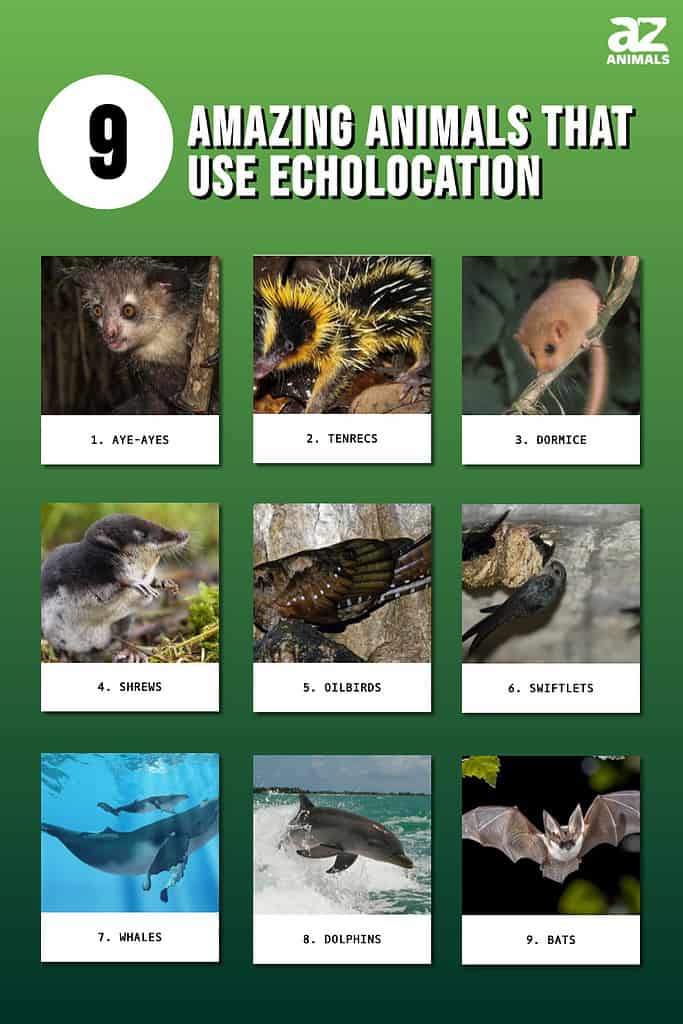
Echolocation is the process of using sound to sense what is around you. Humans have harnessed this ability through the use of technology like sonar which uses sound waves to locate underwater objects and other similar applications. There are a number of animals that use echolocation to hunt, and some even use it as their primary means of exploring their surroundings. In this article, we’ll introduce you to nine amazing animals that use echolocation.
#9 Bats

©Rudmer Zwerver/Shutterstock.com
Our first animal is also the most commonly thought of when it comes to animals with echolocation. Bats are the mammals that everyone thinks of when you first talk about echolocation, but did you know that not all species of bats use this type of adaptation? Primarily, bats in the suborder Microchiroptera use echolocation as a means of hunting, but there are some species in Megachiroptera that use it for navigation. Because of this divergence in evolution, it is a source of debate amongst researchers as to when bats first developed the ability to use echolocation.
Bats emit loud chirps that echo off of objects around them, and their brains have adapted to recognize their own sound and process the data to locate prey and obstacles to avoid. This is likely an adaptation that evolved due to the poor eyesight of their ancestors; however, bats that have perfect eyesight still rely on echolocation to hunt. The bulldog bat (Noctilio leporinus) has been recorded using clicks in excess of 140 decibels, and some bats are able to turn off parts of their ear to protect their hearing when first emitting these noises.
#8 Dolphins
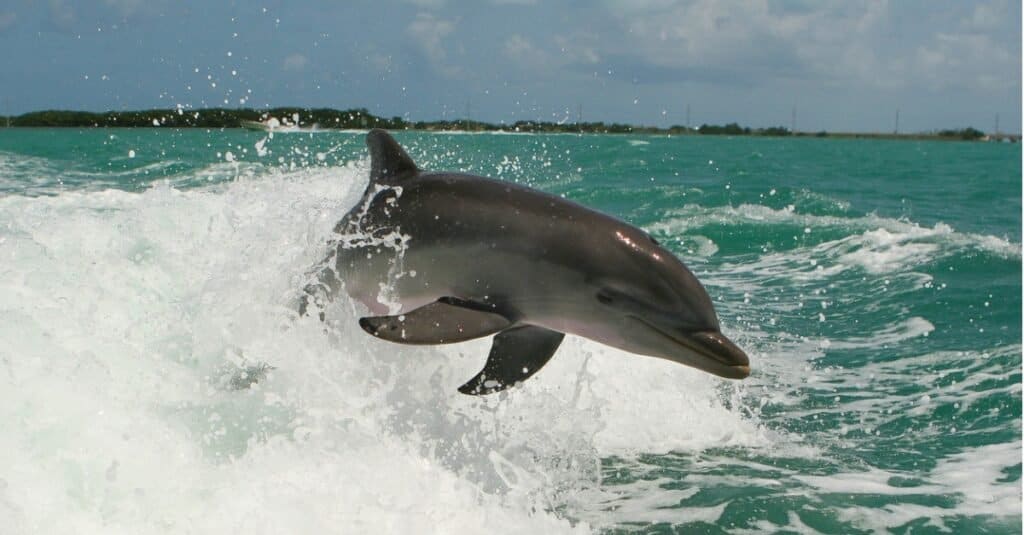
©iStock.com/Brian Sevald
Dolphins are probably the second best-known animals for echolocation. Their high-pitched chittering calls serve another purpose besides simple communication. Bottlenose dolphins (Tursiops truncatus) and other dolphins of the sea utilize different vocalizations for different purposes. Mothers will even spend an entire week repeating the same whistle to their newborns in order to imprint the sound on them.
These types of sounds have been recorded and extensively studied by scientists. Chattering and whistling are conducted at lower frequencies and are used for social communication and even identifying individual animals. High-frequency clicks are used for echolocation, and dolphins are actually able to emit clicks and whistling at the same time.
#7 Whales

©iStock.com/CoreyFord
Whales are another sea creature that makes use of echolocation. All toothed whales utilize a series of clicking to echolocate much like the dolphins we just mentioned. Species like the beluga whale (Delphinapterus leucas) hunt fish and identify other objects through these high-pitched noises. Researchers have been unable to determine precisely how these cetaceans are able to protect their hearing while emitting such loud noises underwater.
Being underwater, whales make use of the fact that sound travels 4.5 times faster in water to vastly improve their target identification. Studies have even shown that dolphins and toothed whales are able to focus their echolocation like a sonar beam to track fast-moving targets. This shows an ability to not only identify animals with echolocation but also select a specific target and track it over varying distances.
Many navies around the world have been experimenting with using certain types of sound waves as weapons or for encrypted communications. These sound waves have proven to be devastating to whale and dolphin populations. When whole pods of whales or dolphins beach themselves, it has been found to be caused by these sound waves.
#6 Swiftlets

©feathercollector/Shutterstock.com
Swiftlets are small, cave-dwelling birds that inhabit Southeastern Asia all the way through the islands of the South Pacific. They can live in flocks of up to one million members, and they are one of only two types of birds to use echolocation. Species like the pygmy swiftlet (Collocalia troglodytes) use clicks similar to whales and dolphins to find their way through the dark caves that they make their home.
Swiftlets emit these clicks in the audible hearing range of 1,500-5,500 hertz meaning that humans can hear them as well. Transmitting up to six clicks per second, these avian species can precisely identify obstacles and find their way through complete darkness. These tiny birds are only 3.5-6 inches long, and they fly lower and much more erratically than their relatives the swifts.
#5 Oilbirds

©Agami Photo Agency/Shutterstock.com
Oilbirds (Steatornis caripensis) are the only other type of bird that use echolocation. Found in South America, these nocturnal creatures feed on fruit and live in caves just like the swiftlet. They use their echolocating talent to navigate the dark environments of the caves they roost in. The oilbird gets its name due to the fact that the native population used to capture and kill young birds due to their extremely fat appearance. They then rendered the animals down into oil to be used for cooking and lighting.
These birds also congregate in large flocks of several thousand members, and they have been known to travel up to 150 miles in one night to forage for food. Oilbirds eat avocados and palm fruits whole, and they help spread these fruit trees throughout their far-ranging territory by distributing the seeds in their excrement. Although these birds use clicks for echolocation like the other members of our list, they also have a unique call that sounds like a person wailing. The sound of this call earned them the Spanish name guácharo which means one who complains.
#4 Shrews

©Rudmer Zwerver/Shutterstock.com
Certain species of shrew are the first ground-based entry on our list of animals with echolocation. The common shrew (Sorex araneus), the short-tailed shrew (Blarina brevicauda), and the wandering shrew (Sorex vagrans) are three species that are known to echolocate. Unlike the other animals, shrews use a series of squeaks as opposed to clicking in order to sense any obstacles underground.
Shrews are some of the smallest mammals, and they also have the distinction of being one of the few venomous mammals as well. Despite their appearance, they are not a rodent at all and are more closely related to moles. It is likely that shrews developed their echolocation to compensate for their extremely small and underpowered eyes as well as the dark environments that they call home.
#3 Dormice
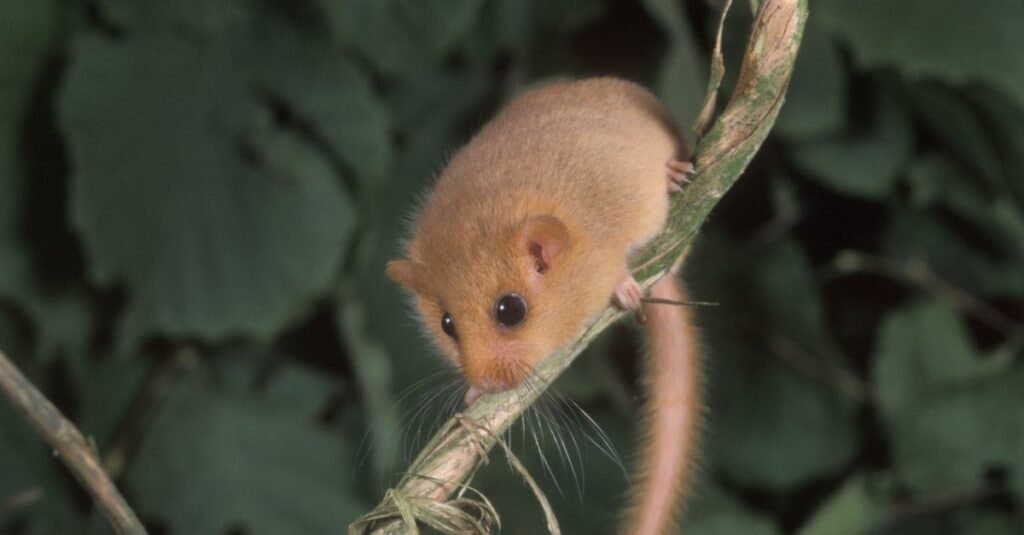
©iStock.com/MikeLane45
Unlike shrews, dormice are actually the rodents they appear to be, and the Chinese pygmy dormouse (Typhlomys cinereus) also uses high-pitched squeaking to echolocate. What makes this even more impressive is that this dormouse is arboreal and effectively blind. Described as lightning-fast, the Chinese pygmy dormouse is able to navigate tree branches with ease even though their eyes are so poorly performing that they can only distinguish between light and dark.
The dormouse is also the first animal that we’ve mentioned whose echolocating noises can’t generally be detected by humans. The squeaks are so soft that they are not even detected by specialized sensors used to record bats’ echolocating clicks. Scientists speculate that the dormouse does not need to utilize loud noises as the objects they are attempting to locate are much closer than those of bats.
#2 Tenrecs
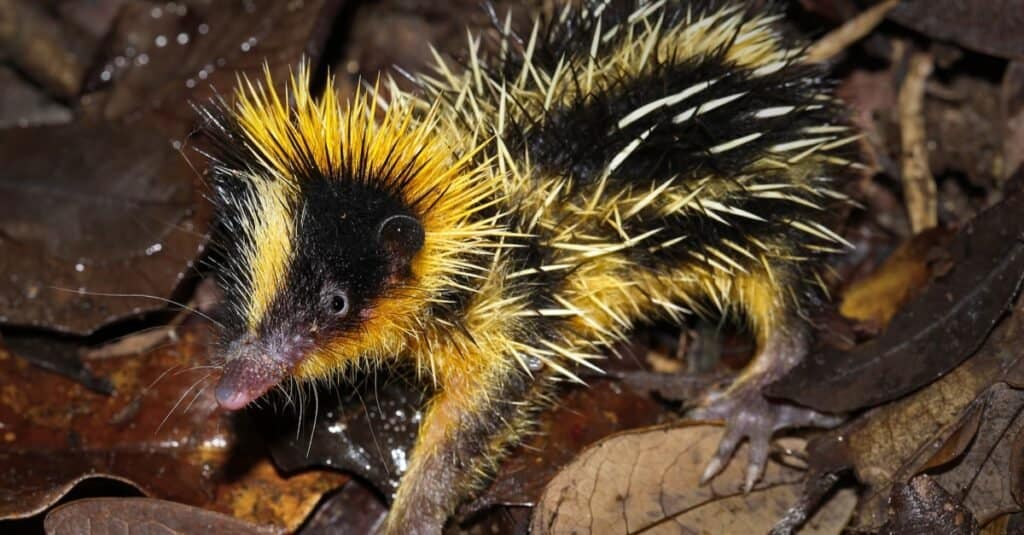
©Ryan M. Bolton/Shutterstock.com
Tenrecs are mammals that inhabit only the island of Madagascar. There are over 30 species of tenrec that have evolved from what is presumed to be one common ancestor. Tenrecs are most closely related to shrews and moles. Some are small and weigh only a few ounces while the largest ranges up to over 2 pounds.
In the 1960s, researchers collected detailed recordings of multiple species of tenrecs using types of clicking noises to locate objects in total darkness. The majority of the specimens used their tongues and lips to generate soft clicking noises. A notable finding in this study was that tenrecs that were raised in the laboratory under isolation still used echolocation clicks when exploring the limits of their cages.
#1 Aye-Ayes
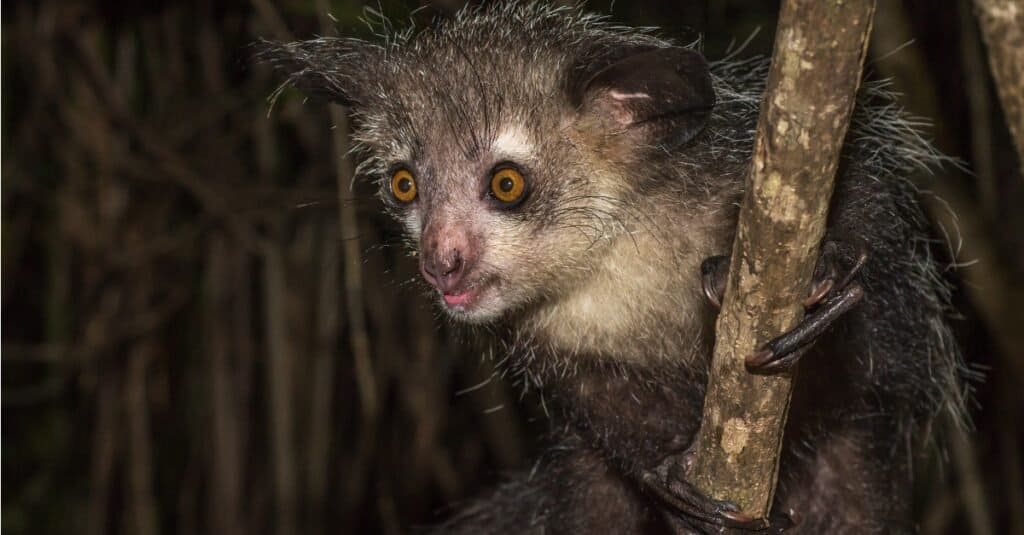
©javarman/Shutterstock.com
The aye-aye (Daubentonia madagascariensis) is another Madagascar native species and the only known primate to use any form of echolocation. They are also unique in that they are the only primate to have constantly growing incisors like a rodent. These mammals don’t actually vocalize any sound used for echolocation, but they use their extremely long, thin middle finger to tap on logs and branches where they then listen for the echoes of hollow tunnels used by insects and grubs.
Aye-ayes are a species of lemur, and their striking appearance has been described as a cross between a monkey and a bat. Local indigenous populations believe the aye-aye to be an omen of bad luck, and they have taken to killing them on sight. That superstition along with habitat loss have combined to make the aye-ate an endangered species.
Across the land, sea, and the skies above, a wide variety of different creatures have developed the virtual superpower of echolocation. Amazingly enough, humans have even demonstrated a similar ability; blind individuals have been studied using echoes to navigate around obstacles in an unfamiliar environment. As our ability to study the world around us only continues to improve, it is only a matter of time before we find additional animals that have adapted in similarly amazing ways.
Echolocation is vital to the survival of a number of species. These are nine animals that use it to navigate and locate prey.
Summary of Top 9 Amazing Animals That Use Echolocation
| Species | |
|---|---|
| 1. | Aye-Ayes |
| 2. | Tenrecs |
| 3. | Dormice |
| 4. | Shrews |
| 5. | Oilbirds |
| 6. | Swiftlets |
| 7. | Whales |
| 8. | Dolphins |
| 9. | Bats |
The photo featured at the top of this post is © iStock.com/Redders48
Thank you for reading! Have some feedback for us? Contact the AZ Animals editorial team.






